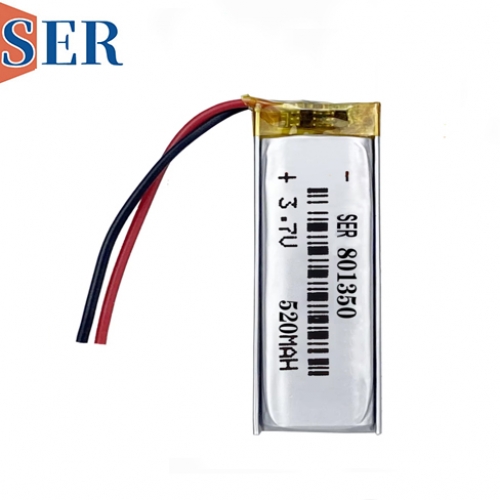The Role and Significance of Resistance in High-Temperature battery, Ultra-Thin battery and LiPo Batteries
The Role and Significance of Resistance in High-Temperature battery, Ultra-Thin battery and LiPo Batteries
In the ever-evolving world of batteries, resistance plays a crucial role in determining the performance, efficiency, and safety of various battery types. From high-temperature batteries to ultra-thin batteries and LiPo (Lithium Polymer) batteries, resistance affects how well a battery can store and deliver energy. This article delves into the significance of resistance in these batteries, exploring its impact on their design, operation, and potential applications.
Introduction to Resistance in Batteries
Resistance, measured in ohms, represents the degree of opposition offered by a circuit element to the flow of electric current. In batteries, resistance arises from various factors such as the internal chemistry, material composition, design, and operating conditions. Understanding and managing resistance is crucial for optimizing battery performance.
High-temperature batteries, ultra-thin batteries, and LiPo batteries each have unique characteristics and applications. Resistance plays a significant role in their performance, affecting factors like energy density, power output, charge/discharge rates, and thermal management.
High-Temperature Batteries
High-temperature batteries are designed to operate at elevated temperatures, often exceeding 100°C. They are typically used in applications where conventional batteries cannot withstand the high temperatures, such as in aerospace, automotive, and industrial settings.
In high-temperature batteries, resistance is a particularly important consideration. The elevated temperatures can cause increased chemical activity within the battery, leading to higher internal resistance. This higher resistance can reduce the battery's energy efficiency, limiting its power output and charge/discharge rates.
To mitigate the effects of resistance in high-temperature batteries, manufacturers utilize advanced materials and designs. For instance, they employ electrolytes with high thermal stability and low resistance. They also optimize the battery's internal structure to minimize resistance and improve heat dissipation.
Ultra-Thin Batteries
Ultra-thin batteries are designed to be extremely thin and lightweight, enabling them to be integrated into thin and compact devices. They are commonly used in smartphones, wearable electronics, and other portable devices where space is limited.
In ultra-thin batteries, resistance is a critical factor due to their compact size. The reduced dimensions limit the amount of material available for energy storage and current flow, resulting in higher resistance. This higher resistance can limit the battery's capacity and power output, affecting its performance in demanding applications.
To address the challenges posed by resistance in ultra-thin batteries, researchers and manufacturers are exploring innovative materials and technologies. For example, they are developing thin and conductive electrodes that offer high energy density and low resistance. They are also exploring new battery architectures that maximize the use of space while minimizing resistance.
LiPo Batteries
LiPo batteries, or Lithium Polymer batteries, are a type of rechargeable battery that uses a lithium-based polymer electrolyte. They offer high energy density, fast charge/discharge rates, and a low self-discharge rate. LiPo batteries are widely used in consumer electronics, drones, and electric vehicles.
Resistance plays a crucial role in the performance of LiPo batteries. The internal resistance of a LiPo battery affects its ability to deliver current efficiently. High resistance can lead to lower power output, reduced efficiency, and even overheating.
To optimize the resistance of LiPo batteries, manufacturers employ various techniques. They carefully select electrode materials that offer high conductivity and low resistance. They also design the battery's internal structure to minimize resistance and maximize current flow. In addition, they employ advanced battery management systems that monitor and control the battery's temperature and operating conditions, further reducing resistance and improving performance.
Impact of Resistance on Battery Performance
The impact of resistance on battery performance is multifaceted. Higher resistance can lead to lower energy efficiency, reduced power output, slower charge/discharge rates, and increased thermal management challenges.
For example, in high-temperature batteries, increased resistance due to high temperatures can limit the battery's ability to deliver high power outputs. This can be problematic in applications that require rapid energy delivery, such as in electric vehicles or industrial equipment.
Similarly, in ultra-thin batteries, the compact size and limited material availability can result in higher resistance. This higher resistance can limit the battery's capacity and power output, affecting its performance in portable devices and other applications.
For LiPo batteries, high resistance can lead to reduced efficiency and faster degradation over time. This can shorten the battery's lifespan and reduce its overall value.
Advancements in Resistance Management
As battery technology continues to advance, so does the management of resistance. Researchers and manufacturers are exploring new materials, designs, and technologies to minimize resistance and improve battery performance.
For instance, they are developing novel electrode materials that offer higher conductivity and lower resistance.





